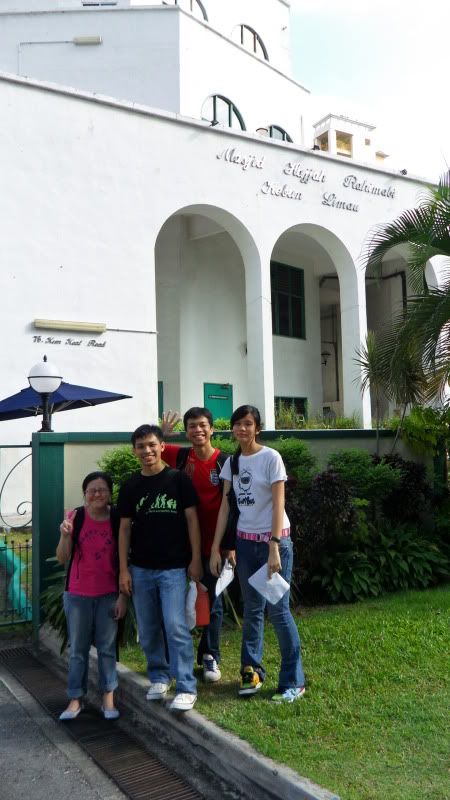It's all started out as a discussion to build a surau (Muslim prayer hall) in Kebun Limau a Land on Kim Keat Road. With the government granting them 573 square metres in 1961, a simple two-storey concrete and wood building was constructed. It was then known as Masjid Kebun Limau.
So ever wonder who is Hajjah Rahimabi? She is the one who donated $1.6 millions for the expansion of the surau in 1970s. This expansion was due to the increase in Malays population thus fund raising was neccesary for the expansion. Mrs Hajjah Rahimabi Ahmad Angulia had inherited her father’s wealth of which she donated the above amount to the mosque. With enough funds gathered, Masjid Hajjah Rahimabi Kebun Limau is then built on the same exact plot and was renamed in honour of the benefactor genorisity. It was then officially opened on 17 November 1984.
Mrs Hajjah Rahimabi comes from an Indian Muslim family called the Angullia. This family had made other contribution to the Muslim community in Singapore such as Angullia Mosque in Serangoon and Angullia Park.

What's Interesting?
You might ask where exactly is Kebun Limau. Kebun Limau was what the Malays refers to the area that consist of Balestier Road, Boon Teck Road, Jln Ampas, Kim Keat Road, Kim Keat Ave, Jln Tenteram, Whampoa Ave, Lorong Limau, Rayman Ave, Towner Rd, St George’s Rd and MacNair Rd. The remains of Jalan Kebun Limau is only the reminder of it’s existence as it was cleared to make way for Central Expressway (CTE). For your info, Kebun Limau means "citrus fruit farm".
Rayman Estate and Rayman Ave also existed before the construction of CTE. It was named after Lazarus Rayman in October 1933, a member of the Legislative Council of the Straits Settlements. This Rayman Estate and Rayman School, where now Whampoa Estate sits on, next to Whampoa Drive. Again what left behind are only legacys of the people.
Author's Thoughts
There were plenty of Singapore roads named after people. So, does the general public especially those living around this areas really knows who are these road named after? So, how does a person able to get their name remembered and have their own street named after them?
Rayman avenue was named after a person, but because of CTE, the road was cleared. Preservation of areas or roads in certainly an issue in Singapore. With the small land area and constant upgrading the country is going through, more of Singapore landmarks have to be cleared. Hopefully, at least the memories of these areas stays through books and pictures.
